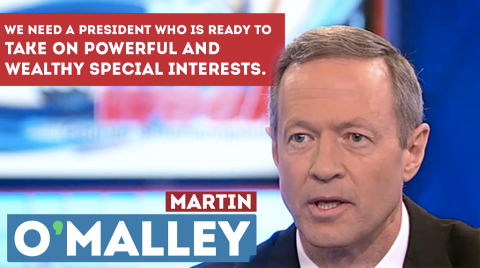Today I work into the fourth part of my series, on energy policy.
It’s clear to me that if the state wants to become more successful at improving the standard of living of its citizens, we have to find ways to make energy more accessible and less expensive for the average consumer. That’s the starting point for my critique on energy policy.
There are many points the Republican candidates seem to agree on, which is to be expected.
**********
David Craig: Craig said it is also time to stop studying fracking and enable natural gas extraction to take place in Western Maryland in an environmentally-responsible manner. (press release, October 4, 2013)
*
Harford County Executive David R. Craig, who also is seeking the Republican nomination, said estimates show fracking in Garrett and Allegany counties will bring as many as 14,000 jobs.
If the state continues to study the issue, the people of Western Maryland will suffer as business go to frack in neighboring Pennsylvania, Ohio and West Virginia, he said. (Gazette, September 19, 2013)
Ron George: Make Energy More Affordable, Available, and Less Dependent on unstable governments half way around the world. This includes developing natural gas resources and using clean coal for our own needs. (campaign site)
*
“I have to let you know that I’ve really struggled with the issue and studied the issue, I’ve listened to the fears and looked at the science,” he said. “And I’ve come down on the side of natural gas drilling for ourselves, for Maryland’s use.”
Fracking now will help the state with its energy costs and diversify its alternative energy production, said George, a GOP candidate for governor.
“We have to have other alternatives that are clean,” he said. (Gazette, September 19, 2013)
*
“Before we go building 40 of these [wind turbines] offshore, let’s do this step by step,” said Del. Ron George, R-Anne Arundel. He offered an amendment to build one wind turbine to study the viability of offshore wind in Maryland. He said the Virginia legislature approved a similar plan on Wednesday.
“It will test the economics of large scale offshore wind projects, it will test the mechanics of construction and issues related to offshore wind projects, and it will study the ability of offshore wind projects to withstand weather conditions” 11 miles off the coast of Ocean City.
“It is really doing the next step, so we don’t go wasting money, and we make sure we do it right,” George said. (Maryland Reporter, March 29, 2012)
Charles Lollar: I support development of Maryland’s Marchellus shale natural gas reserves. (campaign website, “Natural Resources”)
Demand that public utilities be held accountable to their customers. (campaign website, “Accountability”)
*
In order to reduce (energy prices) Lollar wants to remove subsidies and allow all forms of energy to compete on their merits. This includes allowing fracking in Maryland’s Marcellus shale so that natural gas can lower the state’s energy costs. He sees O’Malley’s subsidies for wind energy as a way of picking winners and losers in the market, and opposes to the handouts. (Real Clear Markets, September 3, 2013)
*
Lollar said the state could quickly come out of its perennial deficit if it allowed fracking in Maryland. Lollar emphasized the practice would have to be well regulated, but not so much so as to stop businesses from existing. (SoMDNews, November 1, 2013)
*
“We absolutely need to take advantage of that resource, not just as another energy source but to put people to work,” Charles Lollar, Republican candidate for governor, said of natural gas. (Gazette, September 19, 2013)
*
I think they [Pepco] have an unfair relationship advantage. I’m not prepared to blame the Democratic party but I am prepared to blame the individual people that have made the system what it is. I do believe that when you have an unbalanced system that heavily favors one party over another, this is the kind of response that you get. There’s a lot of strong-arming. There are strong and forceful relationships that are literally causing people to do things that in their right mind, they would not do.
The power held at the highest levels of our state is incredible and it’s crushing good elected officials and appointed commissioners that want to do the right thing. Let’s put the blame where it needs to be. This idea of charging someone a fee before they get appropriate services is wrong no matter what party you’re from. (Bethesda Now, November 7, 2013)
**********
Insofar as energy policy goes, our friends across the aisle greet the issue with reactions ranging from radio silence (Anthony Brown) to a belief that poultry waste can be a “responsible investment” (Doug Gansler) to a pedal-to-the-metal emphasis on so-called “clean energy” and outright hostility to fracking (Heather Mizeur). None of these proposals meet the twin tests of reliability and market worthiness that coal, oil, and natural gas do. In particular, one has to ponder the viability of poultry waste as a fuel after the Waterkeeper Alliance picked on one family for months in an losing effort to make an example of them, a move one local environmental advocate said “definitely sets us back.”
**********
So what I believe had “definitely set us back” is the de facto moratorium on fracking Maryland has had in effect for the last few years, as the state continues to twiddle its thumbs and study the issue at length in “setting an extremely high bar for industry.” Meanwhile, Pennsylvania has seemed to find a reasonable balance between environment and energy; thus natural gas exploration and extraction is creating jobs and revenue for those counties fortunate enough to sit atop the Marcellus Shale formation.
I think David Craig gets this part of the picture, but there’s a lot more to energy policy than just fracking. It would be good to know where he stands on other market-based reforms like repealing the wind energy bill and renewable energy portfolio – as you’ll see in a future segment David has his eye on restoring a balance between economy and environment. So I give him 4.5 of 8 points.
Ron George took a while to come down on the side of fracking, but also seems to foresee more of an “all-of-the-above” approach. Included in that was advocating a single-unit pilot project for offshore wind, despite the fact the bill he attempted unsuccessfully to amend, if passed, had a fiscal note which warned “State expenditures…increase minimally beginning in FY 2013 and significantly beginning in FY 2017 due to higher electricity prices.” Perhaps his view on this has evolved, however, as he did not offer the same amendment in 2013 and voted against O’Malley’s bill. As you’ll see below, he should get credit for weighing evidence.
But it’s difficult to reconcile George’s stance with his previous votes on the subject. Maybe he’s reached a level of satisfaction with the state’s regulations and if so he’s a little more for red tape than my taste would dictate; for that answer I need more guidance. At this point I’ll score him as a solid 4 of 8 points.
Charles Lollar stands with the rest of the Republicans on fracking, which is good. He also makes it sound like O’Malley’s wind folly would be terminated, which is great. But there’s one piece of the puzzle which troubles me greatly.
It’s noted in the Bethesda Now story, where Lollar was quoted as saying “charging someone a fee before they get appropriate services is wrong,” that the forum was intentionally held without a PEPCO representative present. Had Lollar studied the issue more carefully he would have known this rate increase was based on an executive order from Governor O’Malley, who touted the increase as “hardening” the electric grid. The idea is to accelerate the process of preparing the grid for major weather events, which may have been the point brought out by a PEPCO spokesperson had one been invited to the event.
One thing about being an elected official is that you generally hear all sides of the story as part of your duties in office. On the other hand, coming in without that experience means you have to work at the issue. On his front page, Charles claims his goal is to “bring together people of different political beliefs, talents and backgrounds to develop solutions to difficult problems.” Yet he attended a forum where a party to a dispute is sandbagged, and that’s disappointing.
It’s populism to pick on a utility without hearing their side of the story. So my question is whether “well regulated” for fracking will be determined by the hype or the facts. Based on this concern I can only give Charles 2.5 out of 8 points at this time.
**********
The next portion is something I would anticipate the candidates do quite well in: Second Amendment rights. I’m hoping to follow that up with a discussion of what the candidates would do about Obamacare, and for that answer I had to ask directly.
It’s also worth pointing out that this process would evolve. In his answer to my Obamacare question, Ron George elaborated a little on education so I believe I should add that portion in. It wouldn’t surprise me as the campaign rolls along that these pieces might be revised once or twice along the way; you should expect no less.



